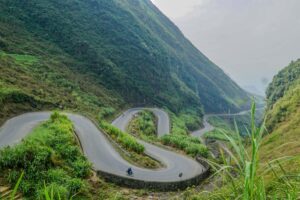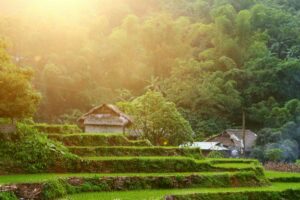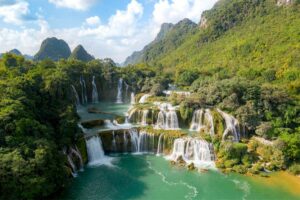Backpacking Vietnam is a dream come true for budget-conscious adventurers seeking vibrant culture, stunning landscapes, and unforgettable experiences. With its affordability, safety, and endless opportunities for exploration, Vietnam has become a top destination for backpackers worldwide. From bustling cities to serene countryside, this Southeast Asian gem offers a diverse range of experiences that will leave you captivated.
Is Vietnam safe for backpacking?
Absolutely! Vietnam is widely regarded as one of the safest countries in Southeast Asia for travelers, including backpackers. Violent crime against foreigners is rare, and the Vietnamese people are known for their warmth and hospitality. However, it’s essential to exercise caution and common sense, as petty theft can occur in crowded areas.
The only significant safety concern is traffic, especially for backpackers who often choose to ride motorbikes without experience or a valid license. It’s common to see backpackers with accident marks due to motorbike mishaps.
Backpack budget for Vietnam
Vietnam is incredibly affordable for backpackers, offering various options to suit different budgets. Even on a tight budget, you can enjoy a comfortable trip filled with delicious food, exciting activities, and decent accommodation.
Example of daily expenses
| Expense | Budget backpacker | Comfort backpacker |
|---|---|---|
| Accommodation | $3 – $7 | $15+ |
| Food | $5 – $10 | $15+ |
| Transportation | $5 – $10 | $15+ |
| Activities | $5 – $15 | $20+ |
| Total per day | $18 – $42 | $65+ |
Vietnam backpacking tips
Get your Vietnam E-Visa on time
Arrange your e-visa before you travel. Many backpackers forget this crucial step. Only a few countries can get visas on arrival. If you’re from the US, Canada, Australia, or most European countries, you need to have this sorted before you go. It can be easily done on the official website. It takes 3 to 5 working days, but longer during national holidays or if you make a mistake in the application, so better do this as soon as possible.
How long backpacking in Vietnam
If you want to backpack throughout the whole country, we advise choosing 4 weeks or longer. This gives you time to explore most of the best things to do for backpackers in Vietnam. If you have less time, focus on the highlights. For 2 weeks or less, concentrate on northern and central Vietnam to avoid excessive travel time and costs.
Get a Vietnamese SIM Card
Getting a local SIM card is essential for staying connected. It’s cheap and provides internet access everywhere you go, which is crucial for navigation, communication, and staying safe. SIM cards are available at the airport or various shops in cities.
Join group tours

Group tours are cost-effective and a great way to meet other travelers. They provide an excellent opportunity to explore popular destinations and hidden gems with the guidance of a local expert. Plus, you’ll have the chance to make new friends along the way.
Don’t do drugs
Vietnam has strict laws regarding drug use, with severe penalties for possession and distribution. As a backpacker, it’s important to avoid drugs to stay safe and out of legal trouble.
Get travel Insurance
Travel insurance is a crucial aspect of any backpacking trip to Vietnam. It provides financial protection and peace of mind against unforeseen circumstances such as medical emergencies, trip cancellations, lost luggage, and other unexpected events. Given the adventurous nature of backpacking, having comprehensive travel insurance is essential.
Make use of laundry services
Packing light and using laundry services is a smart way to travel. In Vietnam, laundry services are affordable and convenient, typically costing around $1 to $2 per kilogram of clothes. Rather than carrying a large number of clothes, you can pack just enough for a few days and have them washed as needed. Most hotels, hostels, and homestays offer laundry services, and you can also find standalone laundry shops in most cities. This approach not only lightens your backpack but also makes your travel experience more comfortable and hassle-free.
Accommodation for backpackers
Backpacker hostels
Hostels are typically geared toward foreign travelers, as the concept is not commonly used by Vietnamese locals. They are a great way to meet other people, socialize, and make friends. Hostels offer dormitory-style rooms with shared facilities, making them an affordable option for budget travelers. You’ll find hostels in many popular destinations across Vietnam, such as Hanoi, Ho Chi Minh City, Hoi An, and Ha Giang, but they might not be available in more remote areas.
Homestays
Homestays provide a unique opportunity to experience Vietnamese culture firsthand by staying with local families. There are different types of homestays to choose from, catering to various preferences and comfort levels:
Traditional Family-Run Homestays
These are typically located in rural areas and offer a glimpse into the daily life of Vietnamese families. You might stay in simple, traditional houses and share meals with the family. This type of homestay provides an authentic cultural experience but may lack some modern amenities.
Ethnic Minority Homestays
Found in regions like Sapa and Ha Giang, these homestays are run by ethnic minority groups. They offer a unique opportunity to learn about the customs, traditions, and lifestyle of Vietnam’s diverse ethnic communities. These homestays often involve basic living conditions but provide rich cultural exchanges.
Modern Homestays
In cities and popular tourist areas, modern homestays have emerged, offering a more comfortable and private experience. These accommodations may have private rooms with en-suite bathrooms and amenities similar to budget hotels, but with a more personal touch. They are a good option for solo travelers looking for a balance between comfort and local interaction.
Food on a budget
Street food
Street food is an essential part of Vietnamese culture and offers a cheap, delicious way to explore the local cuisine. You’ll find vendors selling a variety of dishes like pho, banh mi, and spring rolls on almost every corner, particularly in bustling cities like Hanoi and Ho Chi Minh City. Prices are incredibly affordable, often ranging from $1 to $3 per dish, making it easy to sample a wide range of flavors without breaking the bank. Street food not only satisfies your hunger but also provides an authentic dining experience.
Local restaurants
Local restaurants, known as “quán ăn” or “nhà hàng,” offer another budget-friendly dining option for backpackers. These eateries serve a variety of traditional Vietnamese dishes at reasonable prices, typically between $2 to $5 per meal. While they may not have the polished ambiance of upscale restaurants, they provide hearty portions and authentic flavors. Dining in local restaurants allows you to experience the culinary diversity of Vietnam and enjoy meals in a relaxed, informal setting.
Nightlife
Bia Hoi
Bia Hoi, often dubbed the cheapest beer in the world, is a must-try for budget travelers. This fresh, locally brewed beer is popular in the Hanoi area and can be found at Bia Hoi junctions and local bars. A glass typically costs less than $0.50, making it an incredibly affordable way to enjoy a drink and socialize with locals and fellow travelers
Bars and Pubs
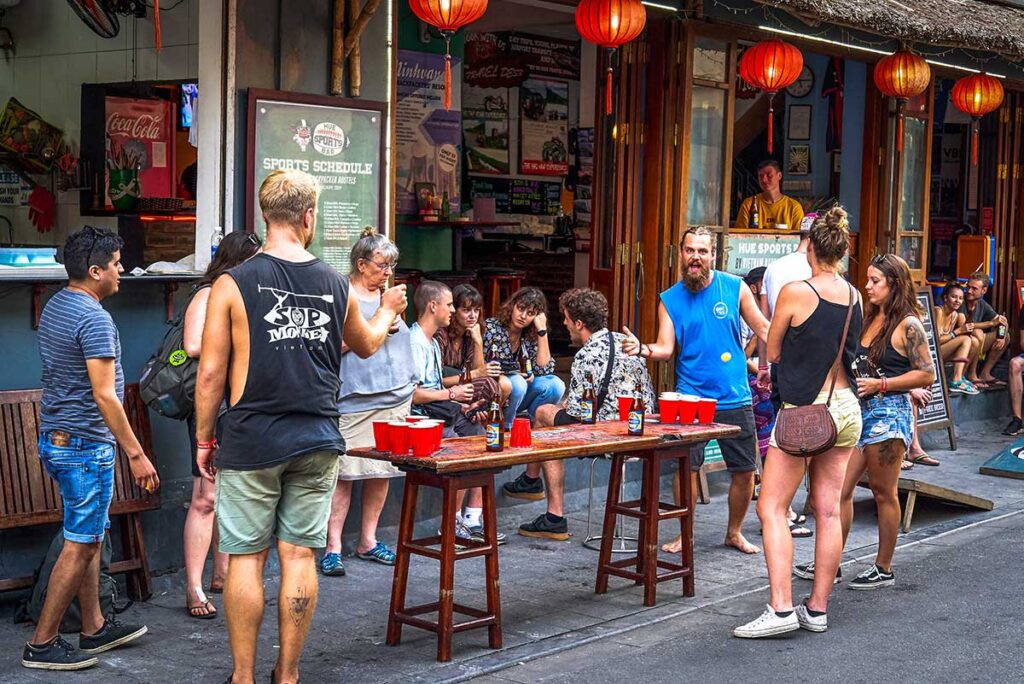
Bars and pubs in Vietnam offer a great atmosphere for backpackers to unwind and meet new people. Beer at regular bars is very cheap, with prices averaging around $1 to $2 per bottle. To keep your costs low, avoid luxury establishments like rooftop bars and stick to more casual spots where you can enjoy a cold beer without the high prices. Cities like Ho Chi Minh City, Hanoi, and Da Nang have numerous backpacker-friendly bars and pubs that cater to travelers looking for a good time.
Pub Crawls
Joining a pub crawl is a fantastic way to experience the nightlife in Vietnam while meeting other backpackers. Many cities have organized pub crawls that take you to several bars and clubs in one night, often including free shots, drink specials, and fun activities.
Local rice wine
Locally made rice wine, often referred to as “rượu,” is another budget-friendly beverage option. It is frequently offered at homestays and made by local people using traditional methods. While the taste can be quite strong, it’s a unique cultural experience and a way to connect with your hosts. Just be mindful of its potency and drink responsibly. Rice wine is often consumed in a communal setting, making it a great way to bond with locals and fellow travelers alike.
Getting around Vietnam
Vietnam’s diverse landscape and extensive transportation network offer backpackers numerous ways to explore the country. Whether you prioritize comfort, budget, or adventure, here’s a breakdown of the most popular transportation options for getting around Vietnam:
Sleeper buses: A favorite among backpackers
Sleeper buses are a popular choice for budget-conscious travelers in Vietnam. They offer a convenient and relatively comfortable way to travel long distances overnight, saving you both time and money on accommodation.
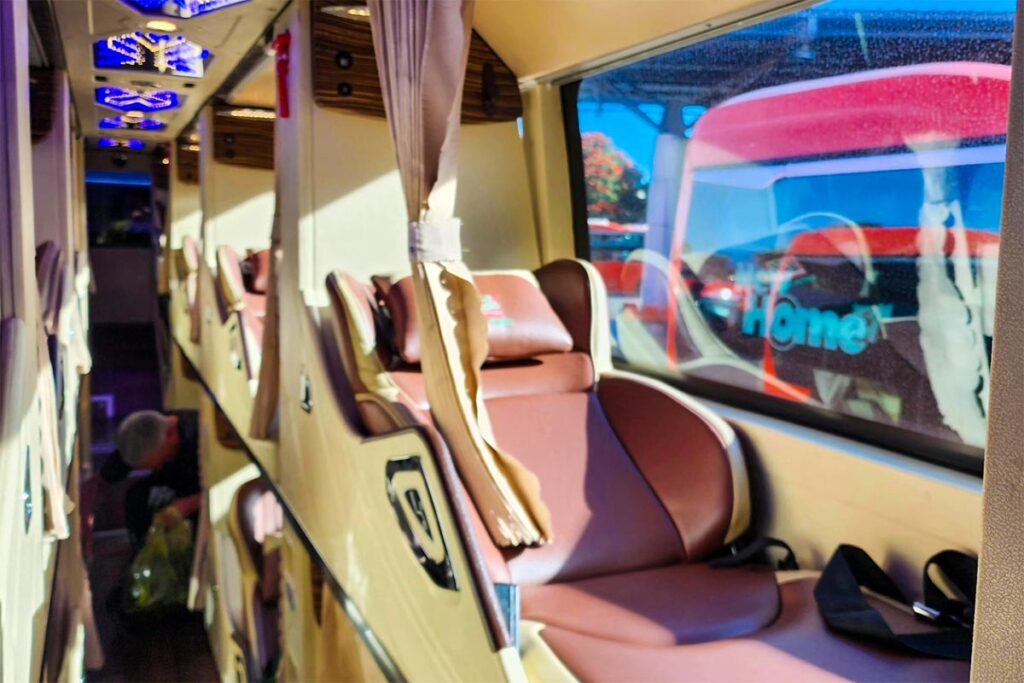
VIP sleeper buses, while slightly more expensive, provide significantly more space and comfort, often at a marginal price increase. If it fits your budget, opting for a VIP sleeper bus can greatly enhance your travel experience. However, keep in mind that VIP sleeper buses may not be available on all routes.

Limousine bus: A comfortable alternative
If you’re not a fan of sleeper buses or have safety concerns, limousine buses are an excellent alternative.

These smaller vans operate during the day and offer comfortable seating with ample legroom. While they might sound pricey, they’re often just a bit more expensive than sleeper buses, making them a worthwhile option for a more comfortable and relaxed journey.
Train travel in Vietnam
Trains are generally considered safer and offer a unique travel experience compared to buses. However, they tend to be more expensive, making them less popular among budget backpackers.

If you prioritize safety and comfort, train travel can be a rewarding option, especially for longer journeys. Sleeper trains are available on select routes, allowing you to travel overnight and save on accommodation costs.
Domestic flights in Vietnam
While flying might not seem like the most budget-friendly option, domestic flights in Vietnam can be surprisingly affordable, with some routes starting as low as $30 USD. Vietjet Air is the largest budget airline in Vietnam, offering numerous flights and competitive prices. However, be aware that Vietjet Air has a reputation for occasional delays and cancellations.
Short distance travel
When it comes to short-distance travel within cities or towns in Vietnam, public transportation options for backpackers are limited and can be challenging to navigate. City buses exist, but understanding the routes and schedules can be a daunting task for those unfamiliar with the local language and system.
Regular taxis are an affordable and convenient option for short trips, especially for solo travelers. However, if you’re on an extremely tight budget, motorbike taxis, known as xe om, are a cheaper alternative. You’ll find xe om drivers stationed at street corners, but their reliability and pricing can be inconsistent.
What is Grab?
Grab is the leading ride-hailing and multi-service app in Southeast Asia, including Vietnam. It offers a convenient and reliable way to book various transportation options, including cars, motorbike taxis, and even shared rides.
Why use Grab?
- Safety: Grab drivers are registered and vetted, ensuring a safer experience compared to hailing random xe om drivers on the street.
- Transparent pricing: The app displays the estimated fare upfront, so you know exactly what to expect and avoid any surprises or price negotiations.
- Convenience: Booking a ride is simple and quick, with just a few taps on your smartphone. You can track your driver’s location in real-time and even share your ride details with friends for added security.
- Multiple options: Grab offers a variety of vehicle types to suit your needs and budget, including cars and motorbike taxis.
How does Grab work?
- Download the Grab app and create an account.
- Enter your pickup and drop-off locations.
- Choose your desired vehicle type and see the estimated fare.
- Confirm your booking and track your driver’s arrival.
- Pay through the app or with cash.
20 Best things to do in Vietnam for backpackers
1. Ha Giang Loop
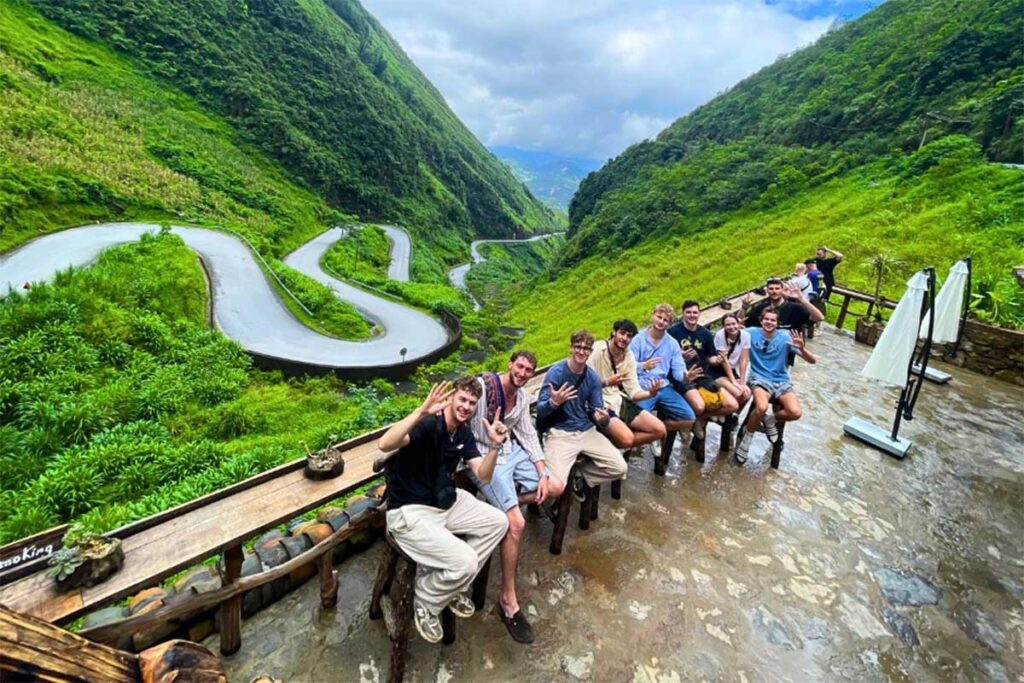
The Ha Giang Loop is a scenic route through the northernmost province of Vietnam, often done by motorbike. In recent years, it has become the most popular activity for backpackers in Vietnam. The Ha Giang Loop offers the perfect combination of social interaction, adventure, natural beauty, and cultural experiences.
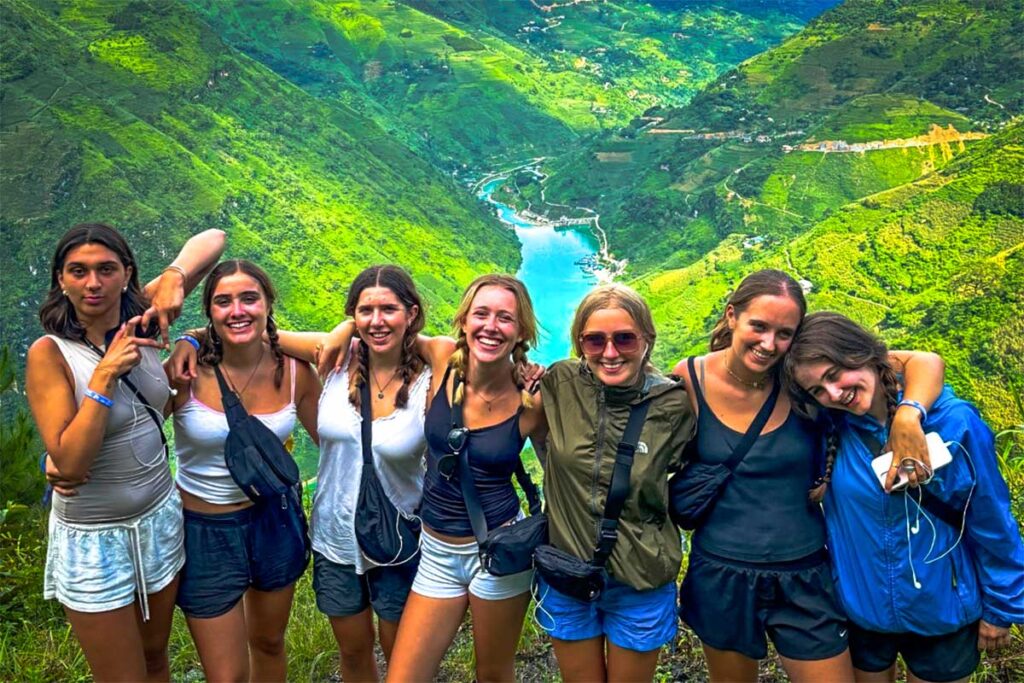
Travelers often join groups, creating a social atmosphere as they drive together and gather at homestays in the evenings. The journey itself is an exhilarating adventure, whether you’re driving or riding on the back of a motorbike, with stunning mountain scenery and the unique cultures of ethnic minority groups visible through villages and markets along the way.
2. Canyoning in Dalat

Canyoning in Dalat is an exhilarating activity that attracts adventure-seeking backpackers. The experience involves abseiling down waterfalls, sliding down natural water slides, and jumping into plunge pools. Dalat’s lush surroundings and cool climate make it an ideal location for this adrenaline-pumping activity. Professional guides provide safety equipment and instructions, ensuring that even those new to canyoning can enjoy the thrill safely. It’s a fantastic way to experience the natural beauty of Dalat while pushing your limits.
3. Exploring Hoi An ancient town
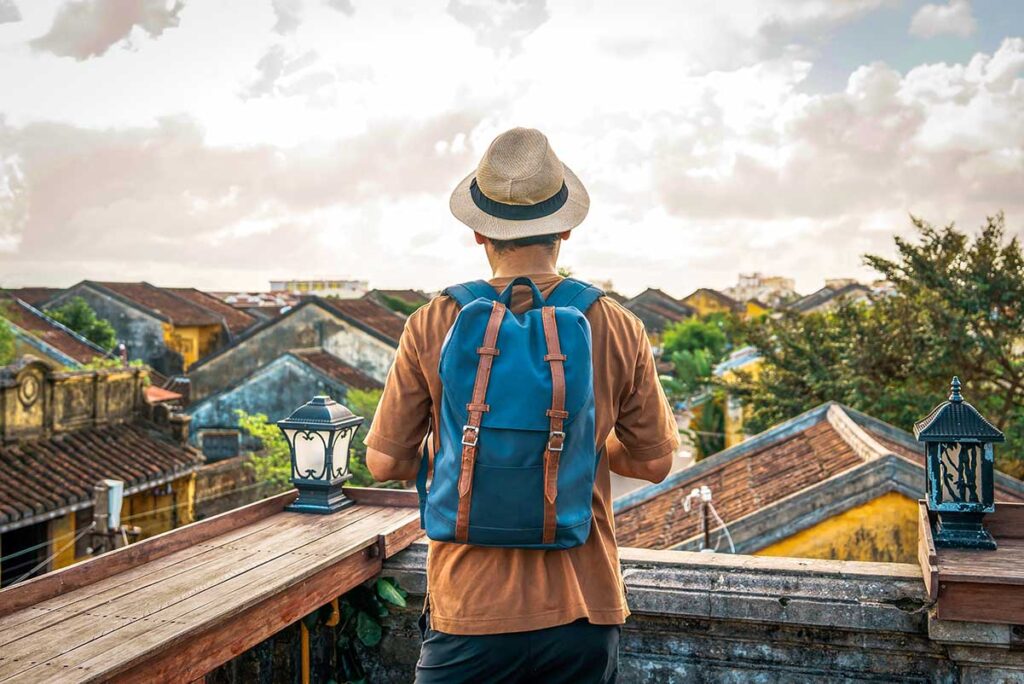
Hoi An Ancient Town is a charming destination that offers a blend of history, culture, and beautiful architecture. Backpackers can spend hours wandering the narrow streets lined with well-preserved buildings, lantern-lit cafes, and boutique shops. The town’s relaxed atmosphere is perfect for exploring on foot or by bicycle.
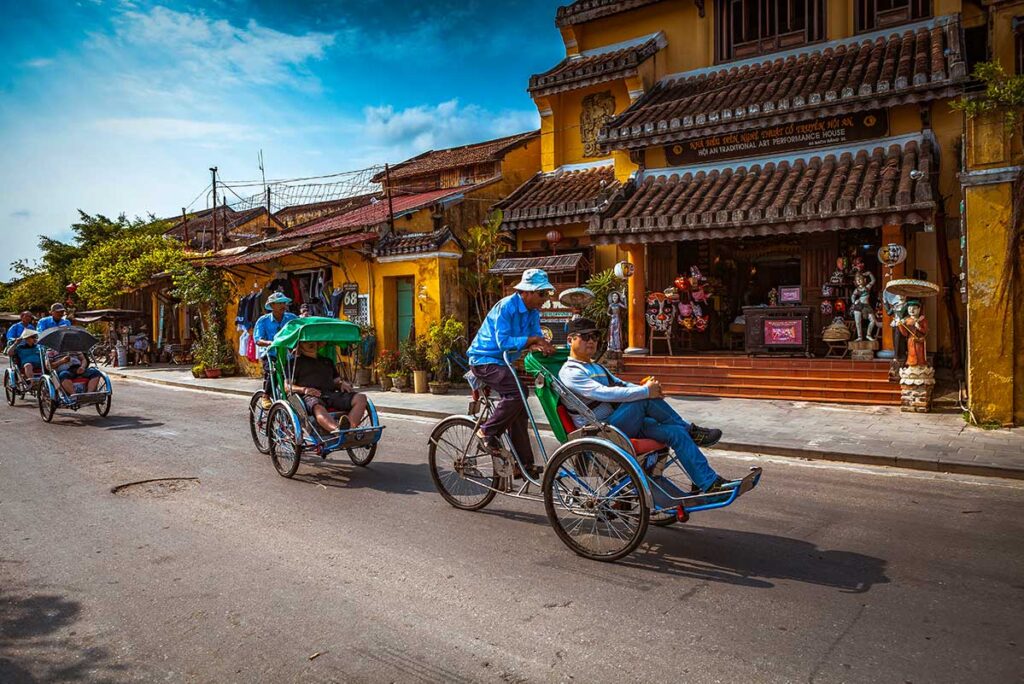
Don’t miss the chance to visit the bustling markets, try local street food, and get clothes tailored at one of the many bespoke shops. The nearby beaches and countryside add to the appeal, making Hoi An a must-visit for any backpacker.
4. A (party) cruise in Halong Bay
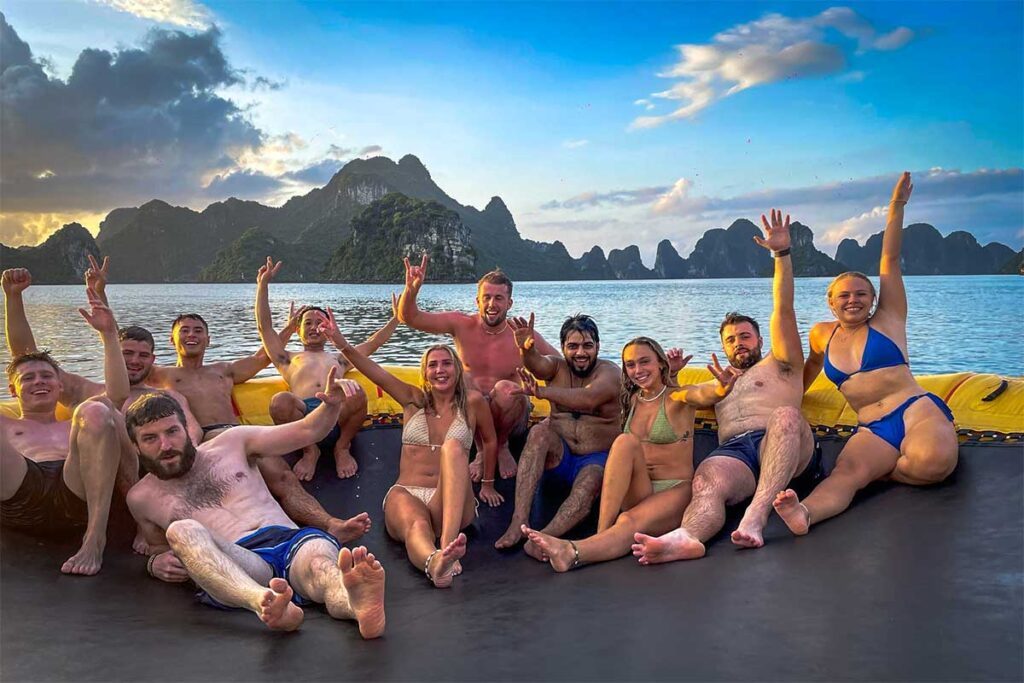
Halong Bay, a UNESCO World Heritage Site, is famous for its emerald waters and thousands of limestone islands. For backpackers, a party cruise in Halong Bay offers a lively and fun way to experience this natural wonder. These cruises cater to single travelers and groups who enjoy drinking, socializing, and maybe even singing karaoke. They provide opportunities for swimming, kayaking, and exploring caves, while the onboard activities ensure a memorable and entertaining trip. Avoid the romantic cruises and opt for those that are specifically geared toward a younger, more social crowd.
5. Caving and jungle expeditions in Phong Nha

Phong Nha-Ke Bang National Park is renowned for its extensive cave systems and dense jungle, making it a prime destination for adventurous backpackers. Caving and jungle expeditions offer a chance to explore some of the world’s most impressive caves, including Hang Son Doong, the largest cave in the world.
These tours often involve trekking through the jungle, wading through underground rivers, and camping in the wild. Guided expeditions ensure safety and provide deep insights into the natural and geological wonders of the park. This activity is perfect for those looking to immerse themselves in nature and experience the raw beauty of Vietnam’s wilderness.
6. Street food experience in Hanoi
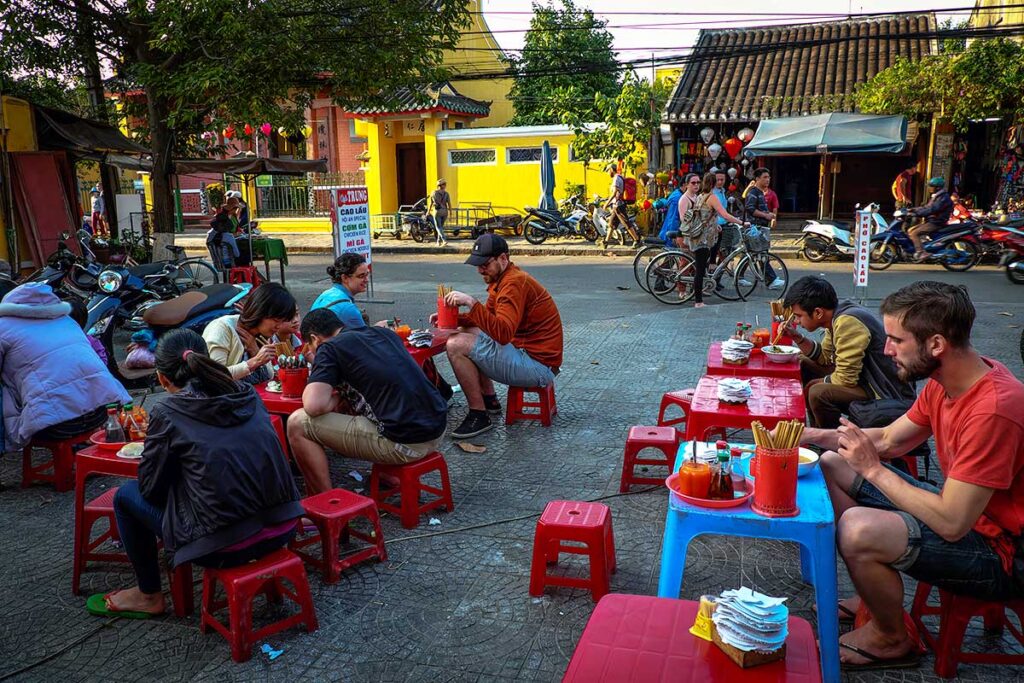
Exploring the street food in Hanoi is a must for any backpacker. The city is renowned for its vibrant street food culture, offering a plethora of delicious and affordable options. You can either try the various dishes yourself or, if your budget allows, join a street food tour. Tours provide the added benefit of local insights and hidden gems, ensuring you don’t miss out on any must-try dishes like pho, bun cha, and banh mi.
7. Shooting range at the Cu Chi Tunnels
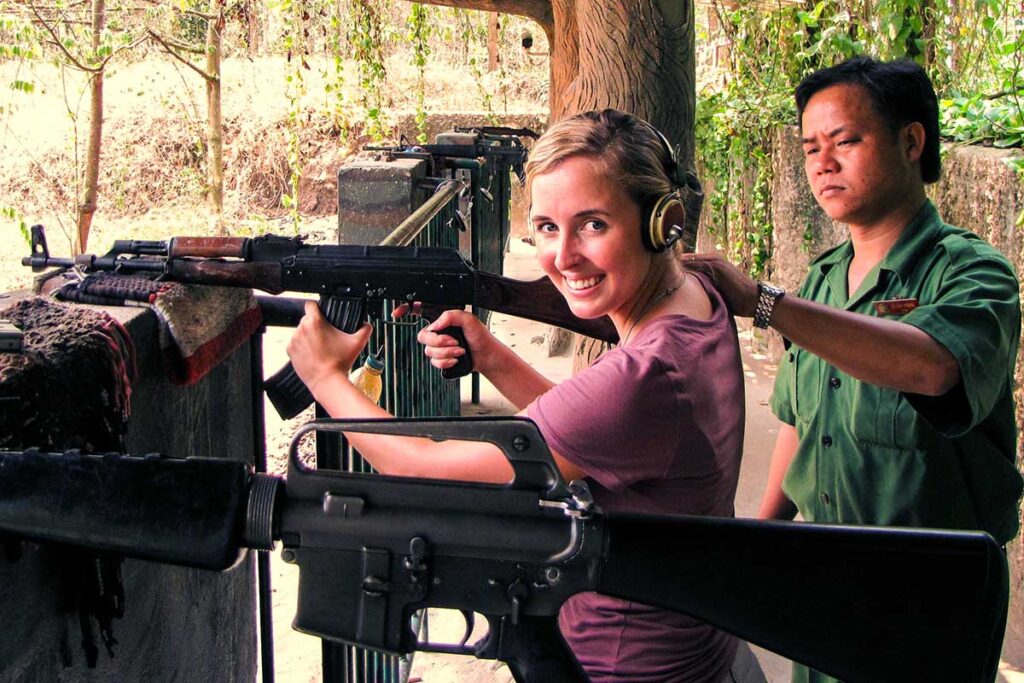
Visiting the Cu Chi Tunnels provides a fascinating glimpse into Vietnam’s war history. These underground tunnels were used by Viet Cong soldiers during the Vietnam War.
After exploring the tunnels, backpackers can experience a shooting range where they can fire various types of guns. This unique activity adds an adrenaline-pumping twist to the historical tour, making it a memorable experience.
8. Trekking with homestay experience in Sapa
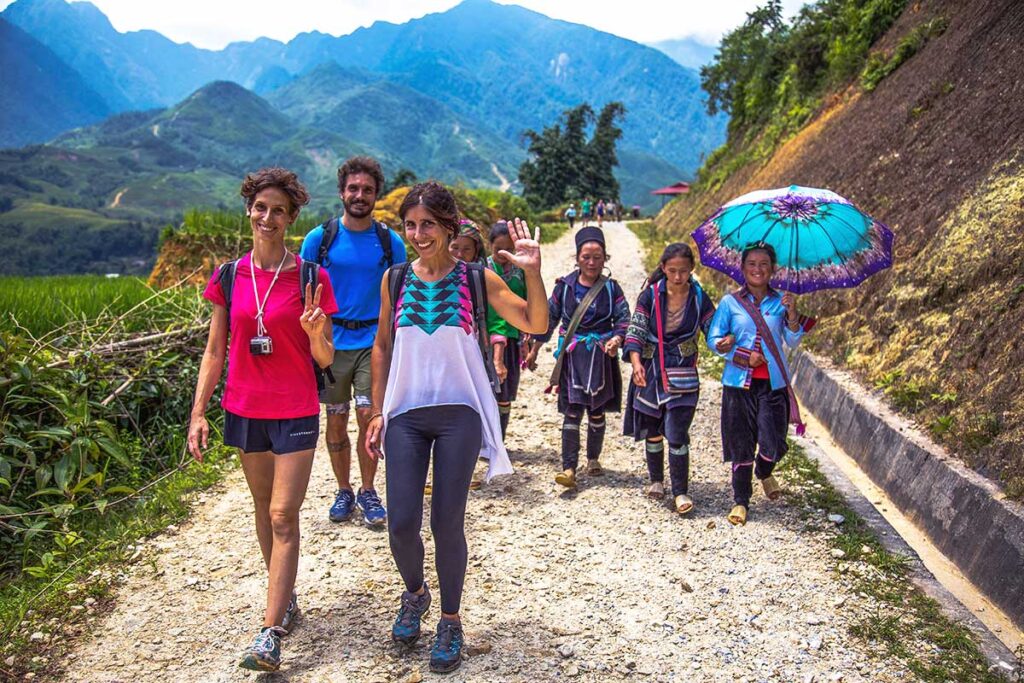
Trekking in Sapa is a fantastic way to experience the stunning landscapes and rich culture of northern Vietnam. Backpackers can embark on guided treks through rice terraces, hills, and villages inhabited by ethnic minority groups. Many treks include homestay experiences, allowing travelers to stay with local families, learn about their traditions, and enjoy home-cooked meals. This immersive experience provides deep cultural insights and stunning natural beauty.
9. Cycling through the countryside of Ninh Binh
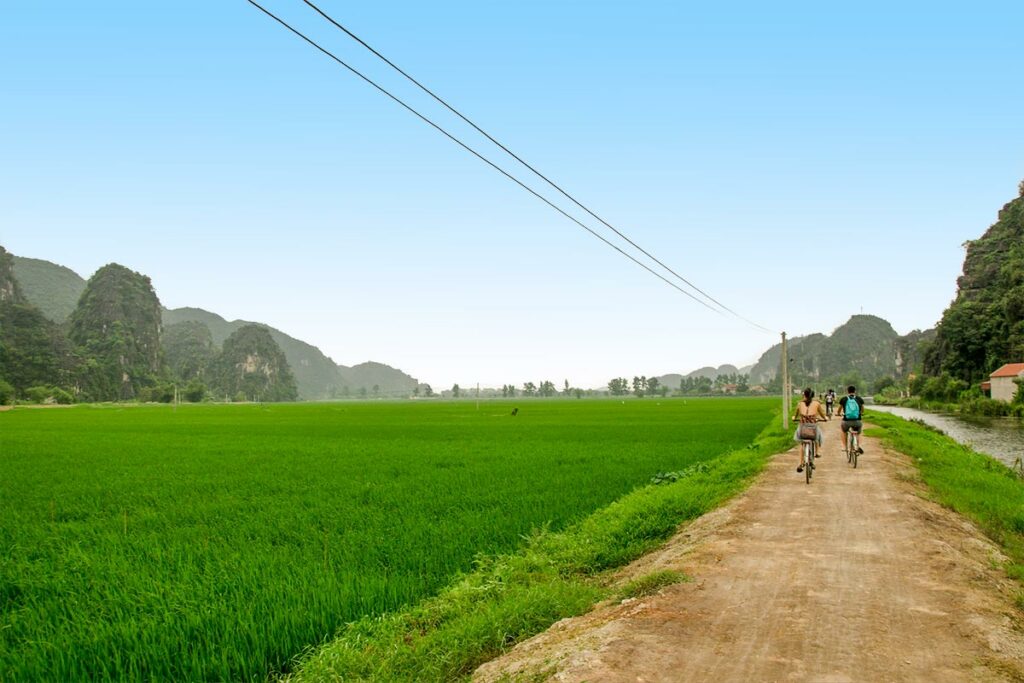
Ninh Binh offers a peaceful retreat with its picturesque countryside, perfect for budget backpackers. You don’t need to join a tour; many accommodations provide free or cheap bicycle rentals. Cycling allows you to explore the stunning sights of Trang An, Tam Coc, and Mua Cave at your own pace. The safe, traffic-free roads and lush rice fields make for a relaxing and scenic adventure.
10. Go off the beaten track in Cao Bang
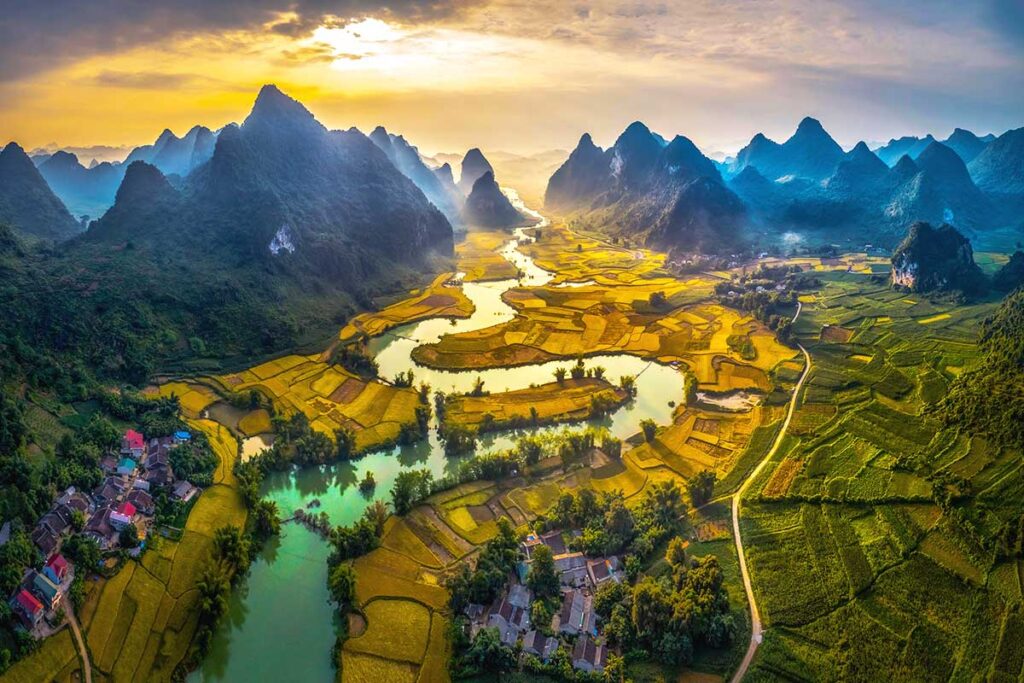
Cao Bang is a destination for adventurous backpackers looking to explore off the beaten path. Known for its breathtaking Ban Gioc Waterfall and stunning landscapes, Cao Bang offers a unique experience away from the typical tourist trail. The remote location provides opportunities for trekking, visiting ethnic minority villages, and immersing yourself in unspoiled nature.
11. Drink Bia Hoi in Hanoi
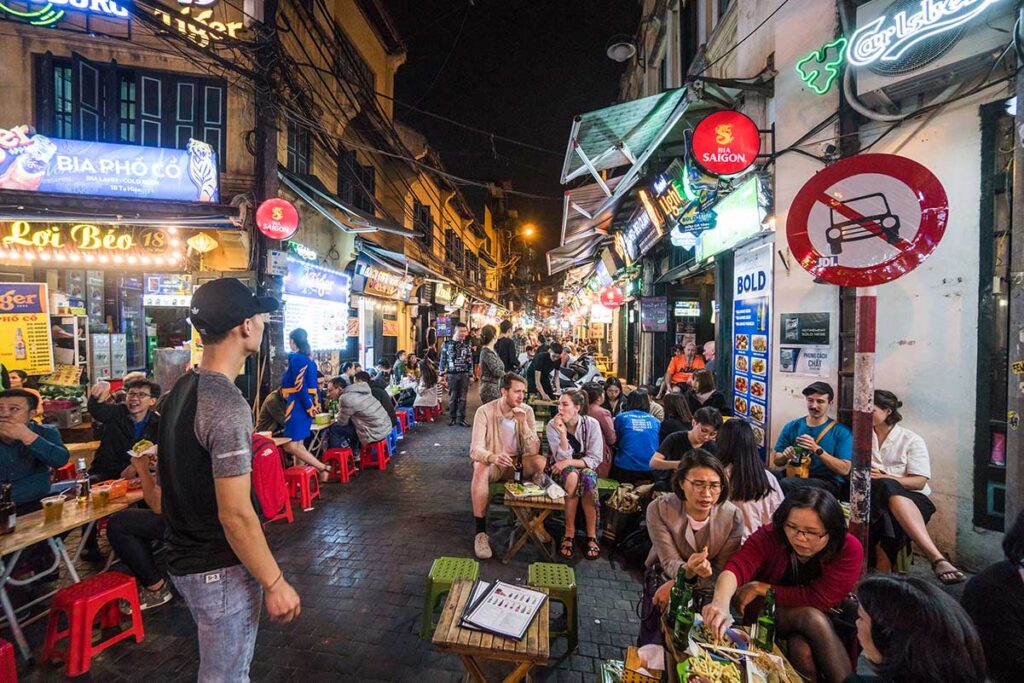
Drinking Bia Hoi, the freshest and cheapest beer in the world, is a quintessential Hanoi experience. These street-side beer halls offer a lively atmosphere where you can enjoy a glass of beer for less than $0.50, socialize with locals and other travelers, and soak in the vibrant street life.
12. ATV driving in the sand dunes of Mui Ne

Mui Ne’s vast sand dunes offer an exciting playground for backpackers. Renting an ATV and driving through the dunes is a thrilling activity that provides stunning views and an adrenaline rush. It’s a unique way to experience the desert-like landscape of Vietnam.
13. Party on Bui Vien Street in Ho Chi Minh City

Bui Vien Street is the epicenter of nightlife in Ho Chi Minh City, known for its bustling bars, clubs, and street food vendors. Backpackers can enjoy a lively night out, meet fellow travelers, and dance the night away. The vibrant atmosphere and affordable drinks make it a must-visit for party enthusiasts.
14. Take a cooking class in Hoi An
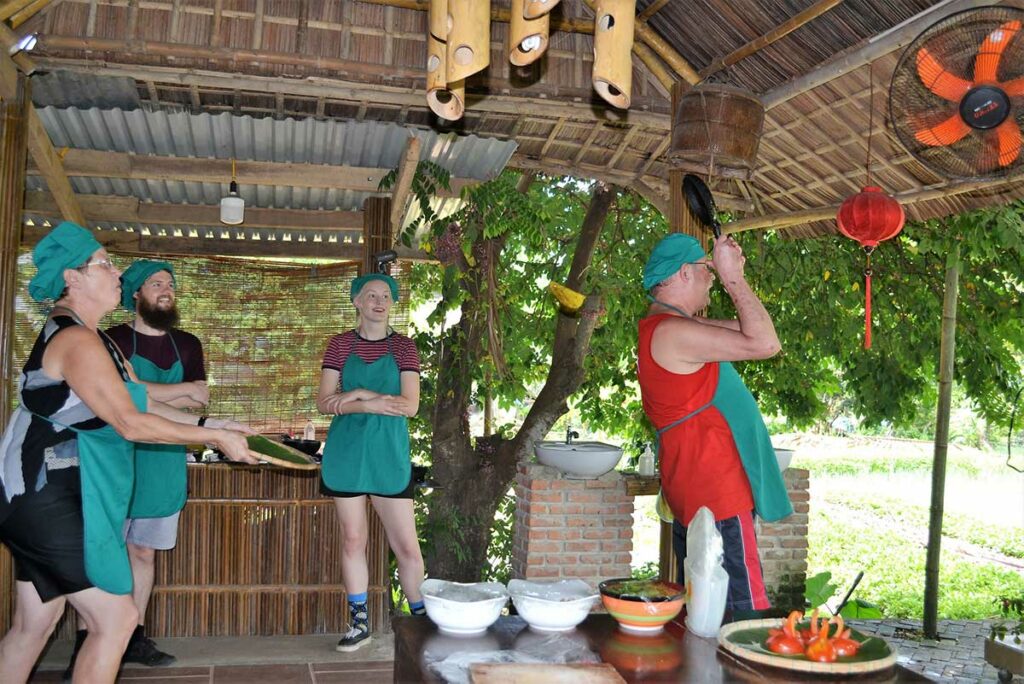
Hoi An is famous for its culinary delights, and taking a cooking class is a fantastic way to dive into Vietnamese cuisine. Backpackers can learn to prepare traditional dishes like pho, spring rolls, and banh xeo from local chefs. Classes often include market tours, providing insights into local ingredients and food culture.
15. Motorbike the Hai Van Pass
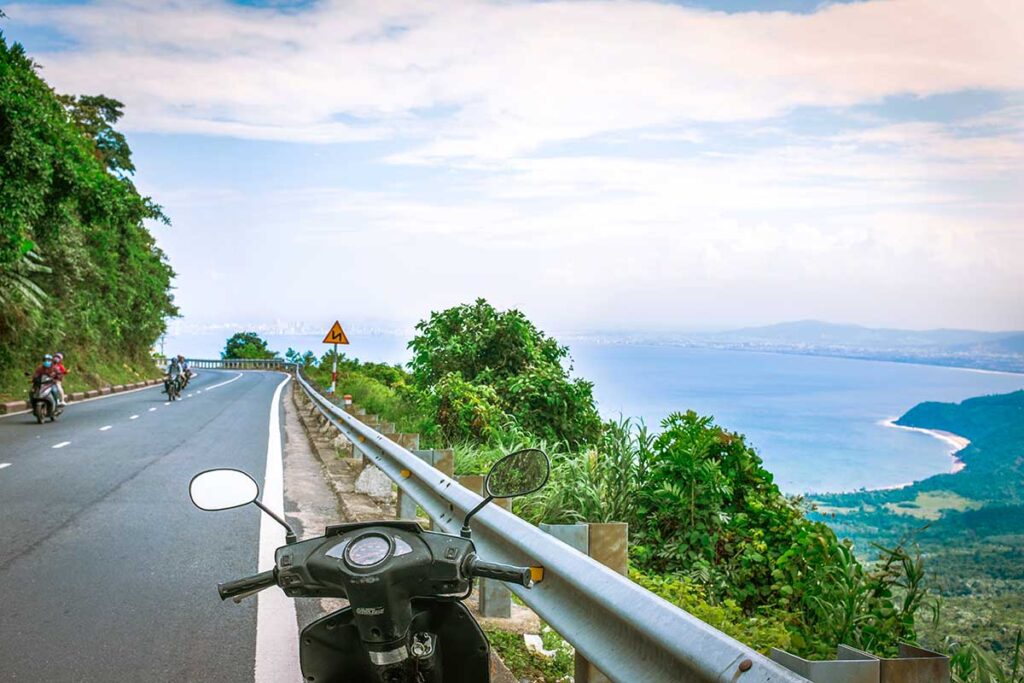
The Hai Van Pass is a scenic mountain road that offers one of the most exhilarating motorbike rides in Vietnam. Backpackers can enjoy breathtaking views of the coastline and lush mountains. For those who prefer not to drive, Easy Rider tours provide a safe and guided alternative, allowing you to sit back and enjoy the ride.
16. Get lost in the alleys of Hanoi Old Quarter
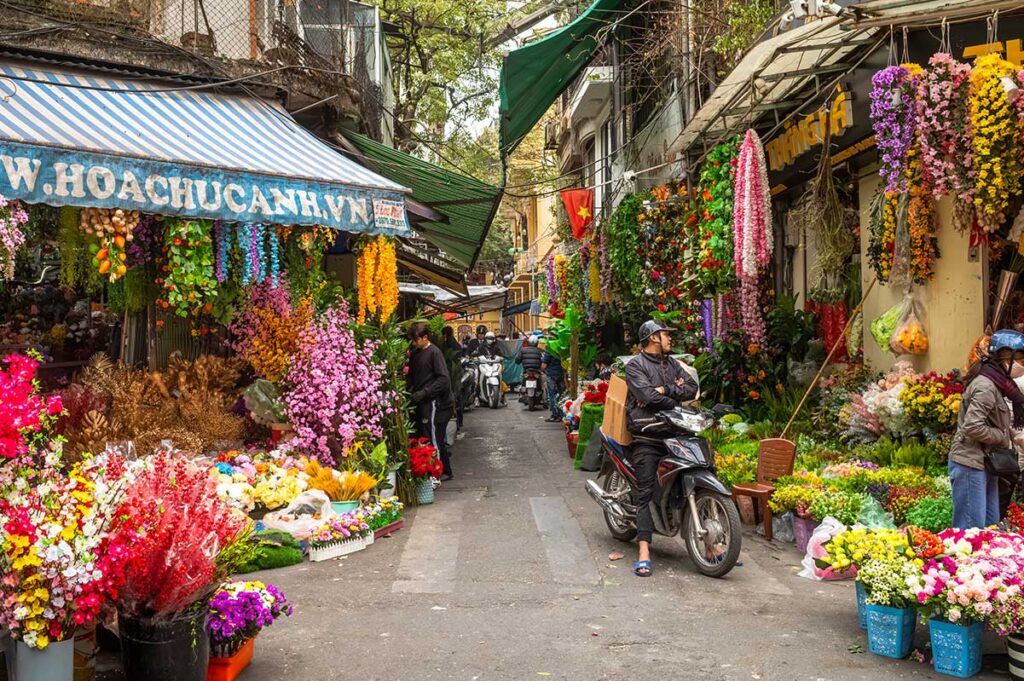
Hanoi’s Old Quarter is a maze of narrow alleys filled with shops, cafes, and historical sites. Getting lost in these bustling streets is a delightful adventure, offering glimpses of everyday life and hidden gems. It’s a perfect way to discover the city’s charm and vibrant culture.
17. Take a boat tour to the floating markets in the Mekong Delta

The Mekong Delta’s floating markets are a unique sight where vendors sell goods from boats. Taking a boat tour allows backpackers to experience this lively market scene, interact with locals, and enjoy the picturesque waterways. It’s a fascinating glimpse into the region’s way of life.
18. Bargain for souvenirs at Ben Thanh Market
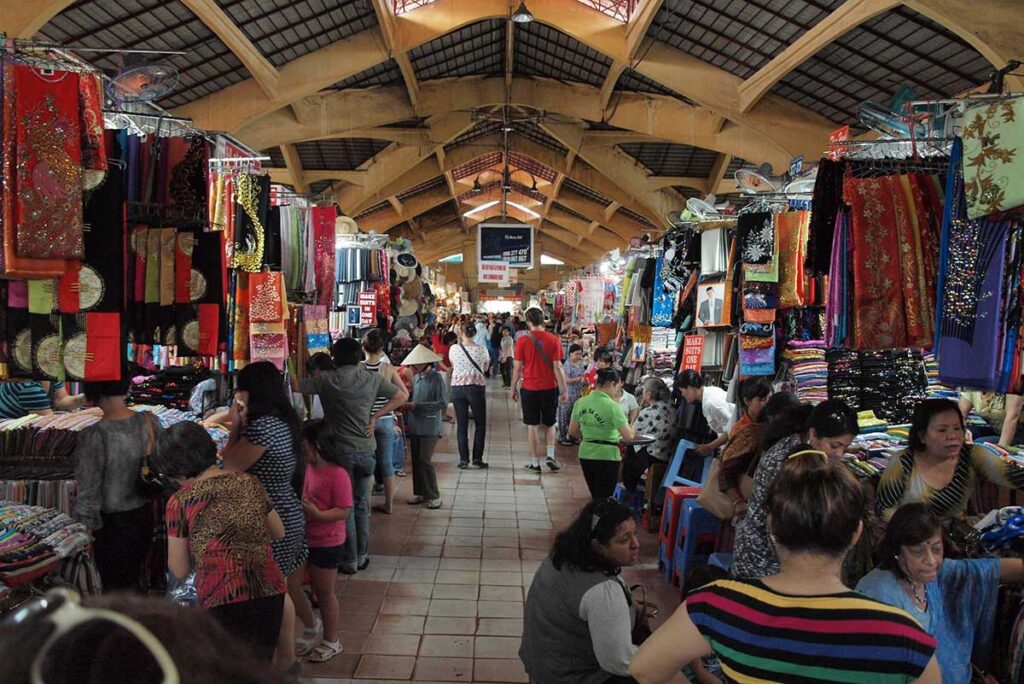
Ben Thanh Market in Ho Chi Minh City is a bustling hub where you can find a wide variety of souvenirs, from clothing and handicrafts to food and spices. Bargaining is expected, making it a fun and interactive shopping experience. It’s a great place to pick up unique mementos of your trip.
19. Discover the hidden beaches of Quy Nhon
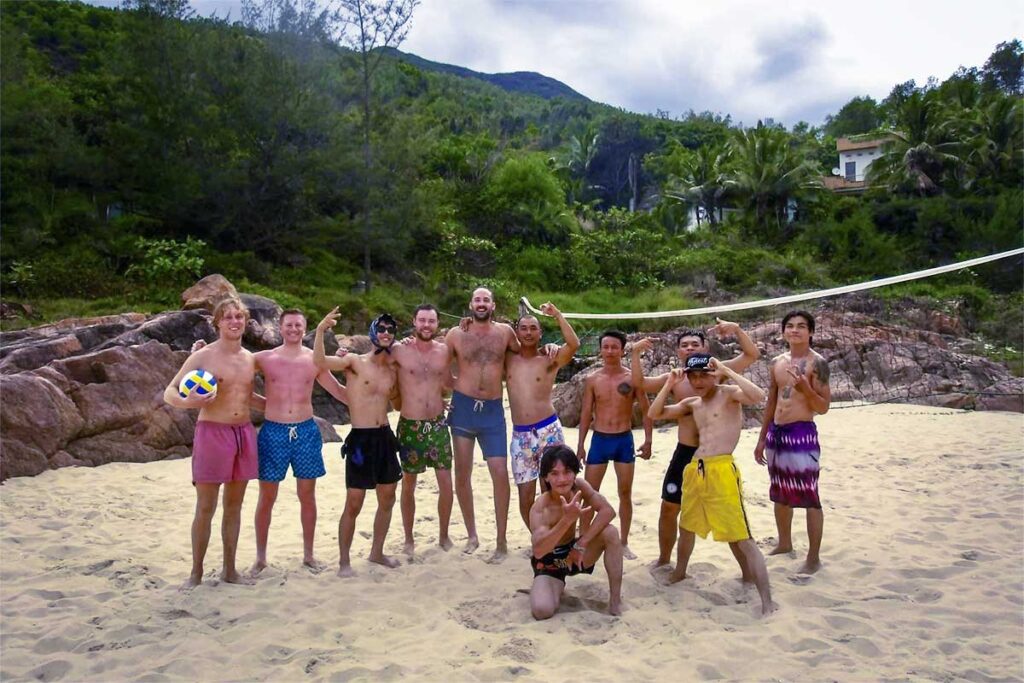
Quy Nhon offers some of Vietnam’s most beautiful and least crowded beaches. Bai Xep Beach, in particular, is a hidden gem perfect for relaxation and water activities. Nearby, the friendly hostel Life’s A Beach provides a great place for backpackers to stay, socialize, and enjoy the serene coastal environment.
20. Visit the Imperial City of Hue
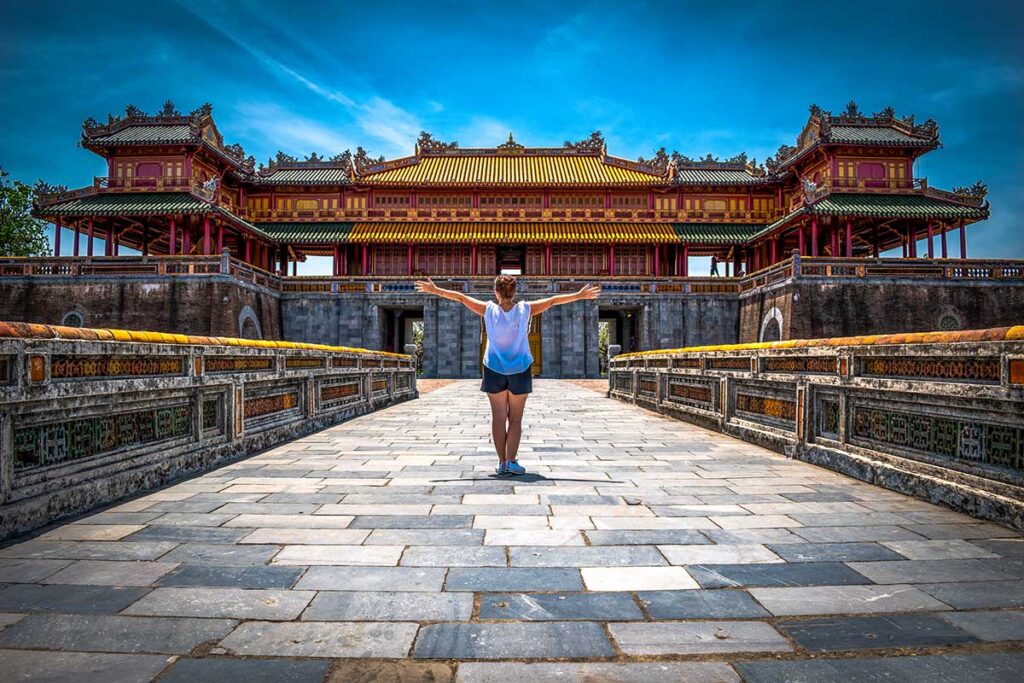
The Imperial City of Hue is a UNESCO World Heritage Site and one of Vietnam’s most significant historical and cultural landmarks. This former capital of the Nguyen Dynasty is located in central Vietnam and is renowned for its well-preserved architecture, ancient temples, and royal tombs. Backpackers can explore the expansive grounds of the Imperial Citadel, wandering through the Forbidden Purple City, and visiting the ornate royal tombs scattered around Hue.
After a day of exploring historical sites, the walking streets of Hue come alive in the evening with a vibrant atmosphere, featuring numerous bars and pubs, perfect for unwinding and socializing with fellow travelers.
Best time to travel to Vietnam
Vietnam is a country with diverse climates and landscapes, making it a year-round destination. However, the best time to visit can vary depending on which part of the country you plan to explore and the activities you want to do. Here’s a detailed guide to help you decide the best time to travel to Vietnam.
Northern Vietnam (Hanoi, Halong Bay, Sapa, Ha Giang)
Best time: October to April
- October to April: The weather in northern Vietnam is cooler and drier during these months, making it ideal for exploring cities like Hanoi, trekking in Sapa, and cruising in Halong Bay. December and January can be quite cold, especially in the mountainous areas.
- May to September: This period is hot and humid with frequent rains. While it’s not the most comfortable time to visit, the landscape is lush and green, which can be particularly beautiful.
Central Vietnam (Hoi An, Da Nang, Hue)
Best time: February to August
- February to August: Central Vietnam enjoys warm and dry weather during these months, perfect for beach activities in Da Nang, exploring the ancient town of Hoi An, and visiting historical sites in Hue. The temperatures are comfortable, ranging from 25°C to 35°C.
- September to January: This region experiences its rainy season during these months, with occasional typhoons. While the rain can disrupt travel plans, the area is less crowded, and the cultural sites are still accessible.
Southern Vietnam (Ho Chi Minh City, Mekong Delta, Phu Quoc)
Best Time: November to April
- November to April: Southern Vietnam has a tropical climate, and this period is the dry season. The weather is warm and pleasant, making it ideal for exploring Ho Chi Minh City, cruising the Mekong Delta, and relaxing on the beaches of Phu Quoc.
- May to October: This is the wet season, with heavy but short-lived rains. While the rain can be intense, it typically doesn’t last all day, allowing for plenty of sightseeing and activities in between showers.
